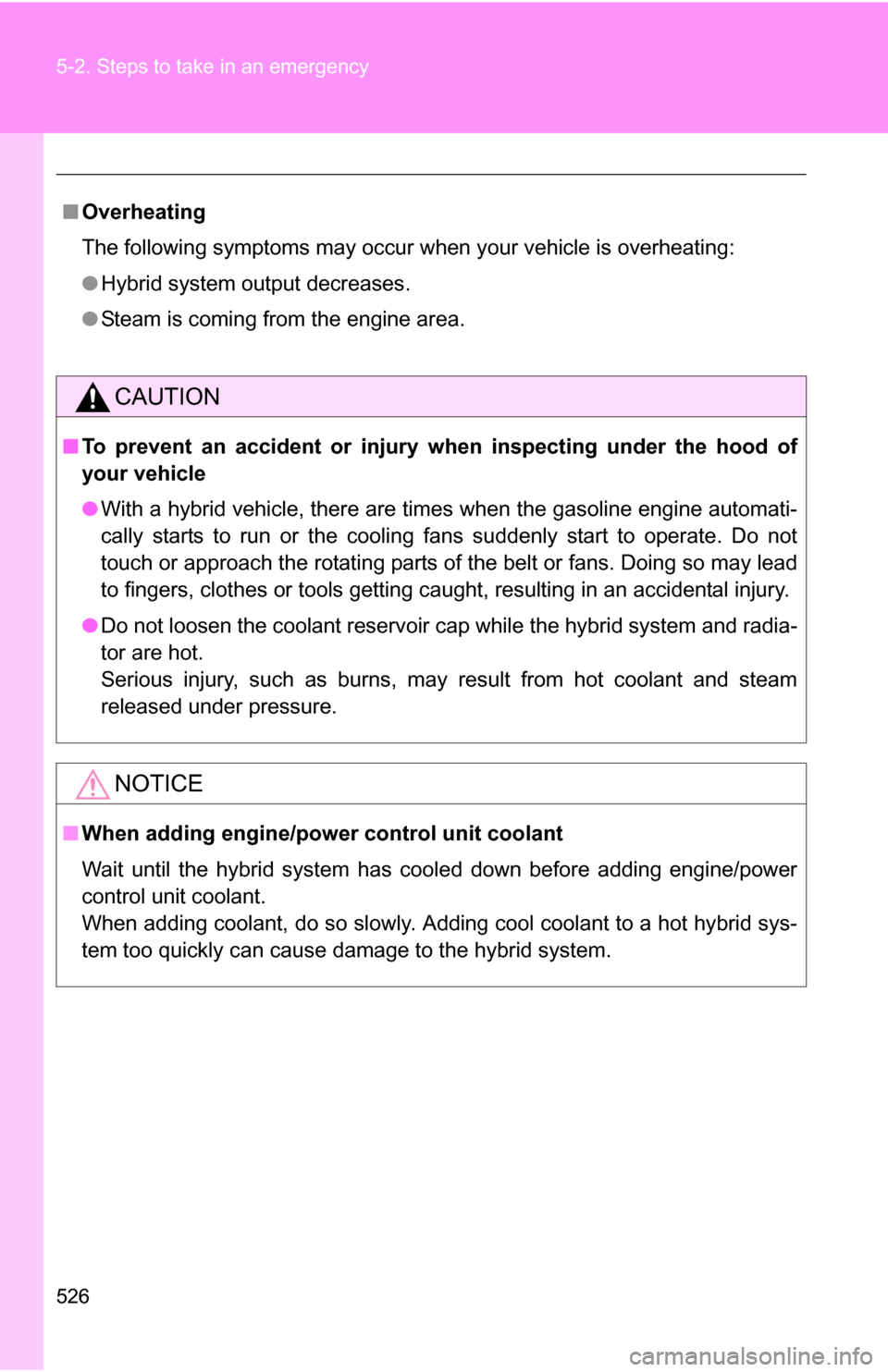Page 424 of 580
424
4-3. Do-it-yourself maintenance
Engine compar tment
Washer fluid tank (P. 438)
12-volt battery ( P. 435)
Brake fluid reservoir ( P. 434)
Engine oil level dipstick ( P. 427)
Engine coolant reservoir ( P. 431)
Engine oil filler cap ( P. 428)Power control unit coolant
reservoir ( P. 432)
Fuse boxes ( P. 459)
Power control unit coolant
radiator ( P. 434)
Electric cooling fans
Condenser ( P. 434)
Engine coolant radiator ( P. 434)
Page 431 of 580
431
4-3. Do-it-yourself maintenance
4
Maintenance and care
Coolant
The coolant level is satisfactory if it is between the “FULL” and “LOW”
lines on the reservoir when the hybrid system is cold.
Engine coolant reservoir Reservoir cap
“FULL”
“LOW”
If the level is on or below the
“LOW” line, add coolant up to the
“FULL” line.
Page 432 of 580
432 4-3. Do-it-yourself maintenance
Power control unit coolant reservoirReservoir cap
“FULL”
“LOW”
If the level is on or below the
“LOW” line, add coolant up to the
“FULL” line.
■If the coolant level drops within a short time after replenishing
Visually check the radiator, hoses, coolant reservoir cap, drain cock and
water pump.
If you cannot find a leak, have your Toyota dealer pressure test the cap and
check for leaks in the cooling system.
■ Coolant selection
Only use “Toyota Super Long Life Coolant” or similar high quality ethylene
glycol based non-silicate, non-amine, non-nitrite, and non-borate coolant
with long-life hybrid organic acid technology.
U.S.A.: Toyota Super Long Life Coolant is a mixture of 50% coolant and 50% deionized water. (Enabled: -31 F [-35 C])
Canada: Toyota Super Long Life Coolant is a mixture of 55% coolant and 45% deionized water. (Enabled: -44 F [-42 C])
For more details about coolant, contact your Toyota dealer.
Page 433 of 580
433
4-3. Do-it-yourself maintenance
4
Maintenance and care
CAUTION
■
When the hybrid system is hot
Do not remove the coolant reservoir cap.
The cooling system may be under pressure and may spray hot coolant if the
cap is removed, causing burns or other injuries.
NOTICE
■When adding coolant
Coolant is neither plain water nor stra ight antifreeze. The correct mixture of
water and antifreeze must be used to provide proper lubrication, corrosion
protection and cooling. Be sure to read the antifreeze or coolant label.
■ If you spill coolant
Be sure to wash it off with water to prevent damage to parts or paint.
Page 524 of 580
524 5-2. Steps to take in an emergency
After the hybrid system has
cooled down, check the engine
coolant level and inspect the
cooling system for leaks.Engine coolant reservoir
Radiator
If necessary, add engine coolant
up to the “FULL” line.
Water can be used in an emer-
gency if engine coolant is unavail-
able. ( P. 535)
STEP4
STEP5
Page 526 of 580

526 5-2. Steps to take in an emergency
■Overheating
The following symptoms may occur when your vehicle is overheating:
●Hybrid system output decreases.
● Steam is coming from the engine area.
CAUTION
■To prevent an accident or injury when inspecting under the hood of
your vehicle
● With a hybrid vehicle, there are times when the gasoline engine automati-
cally starts to run or the cooling fans suddenly start to operate. Do not
touch or approach the rotating parts of the belt or fans. Doing so may lead
to fingers, clothes or tools getting caught, resulting in an accidental injury.
● Do not loosen the coolant reservoir cap while the hybrid system and radia-
tor are hot.
Serious injury, such as burns, may result from hot coolant and steam
released under pressure.
NOTICE
■When adding engine/power control unit coolant
Wait until the hybrid system has cooled down before adding engine/power
control unit coolant.
When adding coolant, do so slowly. Adding cool coolant to a hot hybrid sys-
tem too quickly can cause damage to the hybrid system.